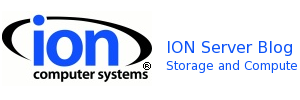Is there any good reason remaining to use anything other than mirrored (RAID 1) SSDs for server boot drives? A recent conversation got me thinking about this subject. So far, no reasons have come to mind.
More and more servers are virtualized every month, but even as that trend progresses, more physical servers are being deployed, too, and they need to boot from something. Most best practices rules call for making boot a separate volume, at least, and preferably a separate device, from other storage used by a server. Sure, you can boot from your SAN and you can even PXE boot. But why? For simplicity and reliability and ease of troubleshooting, among many reasons, local boot makes a lot of sense.
What is required for local boot? At least 32GB of reliable storage. That is about all. With space for logs and paging and updates and such, 2x to 4x is probably good. So, let’s say 100GB of reliable storage. Now, there are a good number of people out there that will argue about my use of the word “reliable”, “Its is just the boot device – all of my data is elsewhere on redundant storage. I can re-install in no time.” Well, maybe. Let’s assume that there is a really good plan to reinstall and restore the boot drive when it fails so that all of the software is there and all of the settings are right and all of the services are configured. And maybe, if properly executed, that really good plan would get the server back online in an hour. That is an hour of unhappy and unproductive users / customers. On the other hand, if one mirrored boot drive fails, there are no unhappy users, no lost productivity and no rush to get the server back online – just a casual task of replacing the failed drive with a spare.
Booting locally is a good idea, but what kind of device is best to boot from locally? The answer always used to be, “a disk”, or, hopefully, mirrored disks, also known as RAID 1. Enterprise SATA disks now start at 500GB and sell for around $225 each, or $450 for the pair. There are those who like the idea of booting their server from a USB Flash drive. That does sound cool and it is not a spinning disk, but the reality is that the continual small writes for OS logs tends to hurt the endurance and this boot drive will wear out before the server is retired. One could also just create a small logical volume for boot out of a large RAID 10, RAID 5, or RAID 6 array. That could certainly lower the cost, but it also increases the complexity of the configuration. Much more than that, every time the OS needs to log a really important event like “I have been up for another 24 hours,” the heads on the disks go seeking off to the place where that boot volume is to record that important event, and impacts performance to the data volume in the process.
That leaves of course, SSD, Solid State Drives based on NAND Flash. One could go back to the old argument that since it is a very reliable solid state device, that single SSD boot drive is good enough. The truth is that even SSDs fail occasionally. So it is still safer and easier to swap out one failed member of an SSD mirror, than to plan, test and worry about restoring that drive if it fails. Mirrored SSD is the answer. The next complaint, of course, is that SSDs cost too much. Except that really is not true. Boot drives do not get re-written very often, just slow incremental logs and updates, so standard endurance enterpise SSDs like Intel’s S3500 series are just fine. 120GB S3500 SSDs cost around $160 each, or $320 for the pair, so they are actually about 1/3 less than entry disks. And the final complaint, which I have actually heard, is “They are just boot drives and they will never benefit from the performance.” In a nice stable data center environment where the server might reboot once a year or so, the. improvement of boot time will not matter, nor will the speed of installing updates or writing logs. So, that is correct, there is little performance benefit to be realized from booting a server from mirrored SSDs. On the other hand, SSDs are better than disks in so many more ways than just performance.
Compared to any reasonable alternative, mirrored SSDs offer higher reliability and lower maintenance. They consume less power and therefore produce less heat. They are solid state so they are silent, produce no vibration and are far more immune to vibration than rotating disks. On top of all of those features which are positives in a server environment, they cost less than the alternative. Except for certain scale-out environments like HPC, mirrored SSD for boot is the only reasonable choice.
